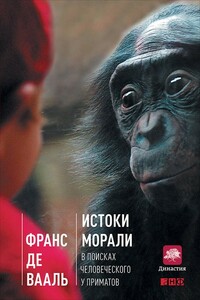Portland, OR: Timber Press.
Matsuzawa, T. 1994. Field experiments on use of stone tools by chimpanzees in the wild. In Chimpanzee Cultures, ed. R. W. Wrangham, W. C. McGrew, F. B. M. de Waal, and P. Heltne, 351–70. Cambridge, MA: Harvard University Press.
–. 2009. Symbolic representation of number in chimpanzees. Current Opinion in Neurobiology 19:92–98.
Matsuzawa, T., et al. 2001. Emergence of culture in wild chimpanzees: education by master-apprenticeship. In Primate Origins of Human Cognition and Behavior, ed. T. Matsuzawa, 557–74. New York: Springer.
Mayr, E. 1982. The Growth of Biological Thought. Cambridge, MA: Harvard University Press.
McComb, K., et al. 2011. Leadership in elephants: The adaptive value of age. Proceedings of the Royal Society B 274:2943–49.
McComb, K., G. Shannon, K. N. Sayialel, and C. Moss. 2014. Elephants can determine ethnicity, gender and age from acoustic cues in human voices. Proceedings of the National Academy of Sciences USA 111:5433–38.
McGrew, W. C. 2010. Chimpanzee technology. Science 328:579–80.
–. 2013. Is primate tool use special? Chimpanzee and New Caledonian crow compared. Philosophical Transactions of the Royal Society B 368:20120422. McGrew, W. C., and C. E. G. Tutin. 1978. Evidence for a social custom in wild chimpanzees? Man 13:243–51.
Melis, A. P., B. Hare, and M. Tomasello. 2006a. Chimpanzees recruit the best collaborators. Science 311:1297–300.
–. 2006b. Engineering cooperation in chimpanzees: Tolerance constraints on cooperation. Animal Behaviour 72:275–86.
Mendes, N., D. Hanus, and J. Call. 2007. Raising the level: Orangutans use water as a tool. Biology Letters 3:453–55.
Mendres, K. A., and F. B. M. de Waal. 2000. Capuchins do cooperate: The advantage of an intuitive task. Animal Behaviour 60: 523–29.
Menzel, E. W. 1972. Spontaneous invention of ladders in a group of young chimpanzees. Folia primatologica 17:87–106.
–. 1974. A group of young chimpanzees in a one-acre field. In Behavior of Non-Human Primates, ed. A. M. Schrier and F. Stollnitz, 5:83–153. New York: Academic Press.
Mercader, J., et al. 2007. 4,300-year-old chimpanzee sites and the origins of percussive stone technology. Proceedings of the National Academy of Sciences USA 104:3043–48.
Miklósi, Á., et al. 2003. A simple reason for a big difference: Wolves do not look back at humans, but dogs do. Current Biology 13:763–66.
Mischel, W., and E. B. Ebbesen. 1970. Attention in delay of gratification. Journal of Personality and Social Psychology 16:329–37.
Mischel, W., E. B. Ebbesen, and A. R. Zeiss. 1972. Cognitive and attentional mechanisms in delay of gratification. Journal of Personality and Social Psychology 21:204–18.
Moore, B. R. 1973. The role of directed pavlovian responding in simple instrumental learning in the pigeon. In Constraints on Learning, ed. R. A. Hinde and J. S. Hinde, 159–87. London: Academic Press.
–. 1992. Avian movement imitation and a new form of mimicry: Tracing the evoluting of a complex form of learning. Behaviour 122:231–63.
–. 2004. The evolution of learning. Biological Review 79:301–35.
Moore, B. R., and S. Stuttard. 1979. Dr. Guthrie and Felis domesticus or: Tripping over the cat. Science 205:1031–33.
Morell, V. 2013. Animal Wise: The Thoughts and Emotions of Our Fellow Creatures. New York: Crown.
Morgan, C. L. 1894. An Introduction to Comparative Psychology. London: Scott.
–. 1903. An Introduction to Comparative Psychology, new ed. London: Scott. Morris, D. 2010. Retrospective: Beginnings. In Tinbergen's Legacy in Behaviour: Sixty Years of Landmark Stickleback Papers, ed. F. Von Hippel, 49–53. Leiden, Netherlands: Brill.
Morris, R., and D. Morris. 1966. Men and Apes. New York: McGraw-Hill. Mulcahy, N. J., and J. Call. 2006. Apes save tools for future use. Science 312:1038–40.
Nagasawa, M., et al. 2015. Oxytocin-gaze positive loop and the co-evolution of human-dog bonds. Science 348:333–36.
Nagel, T. 1974. What is it like to be a bat? Philosophical Review 83:435–50.
Nakamura, M., W. C. McGrew, L. F. Marchant, and T. Nishida. 2000. Social scratch: Another custom in wild chimpanzees?







